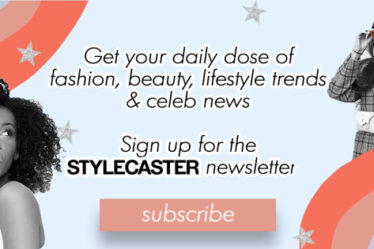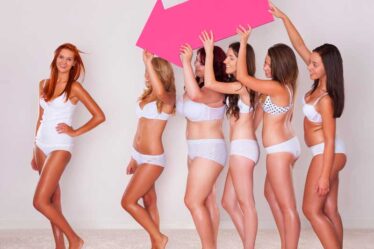
At a recent launch dinner at Metropolis by Marcus Samuelsson in downtown New York, conversation among beauty editors turned to fashion’s sudden interest in the red hot prestige makeup market, which grew 15 percent last year to $10.2 billion, according to Circana, while sales in other luxury sectors slumped.
There is no doubt that luxury fashion houses have beauty on the brain: Last Fall, soon after Puig-backed Rabanne Beauty entered Ulta Beauty stores in an exclusive deal with almost 70 makeup skus, Coty announced that it would be resurrecting Marc Jacobs’ beloved colour line. A dizzying assortment of lipsticks, eyeshadows, complexion products and skincare from Prada followed via a licensing agreement with L’Oréal, not to mention new entries from Peter Dundas and an announcement from LVMH-owned Celine that it too would be entering the makeup space with its own spin on lipstick. This all comes on the heels of new cosmetics offerings from Hermès, Valentino, as well as Dolce & Gabbana — and looming news from Balmain, where a beauty debut is expected in September via a shiny new Estée Lauder license.
But when discussing the current offerings on the market over Samuelsson’s fried olives, Valentino Beauty solicited unenthusiastic shrugs, a few editors revealed having never actually seen Rabanne’s products at retail and thoughts on Prada ranged from “the packaging looks cheap” to “I kind of like the foundation.”
With name recognition, existing brand equity and a relentless launch cadence, the fashion-backed beauty brand era is upon us — and it looks a whole lot like the celebrity-fronted era that preceded it.
“There are a lot of parallels,” said Yarden Horwitz, co-founder of Spate, a consumer data aggregator that focuses on beauty and wellness trends. “With these fashion brands, we tend to see beauty launches do really well at the beginning because they have the story, they have the name. But similarly to what we’ve seen with a lot of celebrity beauty brands, they get that really big spike in search interest [at first] — and then it just falls flat.”
Even if fashion brands do have established roots in the beauty space, the build around colour cosmetics can be slow. With a blockbuster fragrance proposition in its 1 Million franchise and a novel assortment based on a number of well-conceived connections to the space-age legacy of its fashion house, Rabanne’s expansion into makeup seemed poised for immediate crossover success. But there has been some initial confusion among consumers. “I’ve never heard of it, other than their fragrances so I didn’t want to buy anything,” one user recently quipped of the makeup in the popular Beauty Guru Chatter subreddit.
Today’s smartest beauty lines have become tactically skilled at inserting themselves into the social dialogue. Rare Beauty by Selena Gomez and Hailey Bieber’s Rhode are two leading examples.
“Blush was having a huge moment with consumers so they launched this high-pigmented product that was very easy and visually pleasing. it tied into what consumers were seeking out,” Horwitz said of Rare’s best-selling Soft Pinch Liquid blush.
Meanwhile, Bieber has mastered the art of creating aesthetics first, and launching her products after.
“Rhode is just such a great brand for fashion to learn from,” continued Horwitz, pointing to Bieber’s ability to manufacture social media moments, such as the pervasive #strawberrygirlmakeup. “She starts a trend, and then consumers are, of course, excited to buy into this aesthetic.”
It’s an interesting takeaway, especially because trendsetting power was once the exclusive purview of fashion brands, when runway fashion prioritised backstage beauty as a way to create viral moments before virality was an essential KPI. It speaks further to the disconnect between fashion brands and their beauty offerings, which can crystallise when new makeup offerings debut, often devoid of much overlap with the fashion they’ve theoretically been inspired by, save for a rock-stud lipstick bullet.
“I’m disappointed to keep seeing this separation between what these brands do in the fashion space and how they present in beauty,” said Marina Mansour, vice president of beauty and wellness at Kyra, a tech-powered creator agency with a focus on Gen-Z consumer behaviours.
Mansour, who materialises on my Zoom screen wearing an Eckhaus Latta logo tee and one of Starface’s hydrocolloid pimple patches, cites an oft-referenced problem with fashion brands who sell their beauty businesses to licensees that don’t have enough insight on and even less access to the former’s brand heritage. Valentino Beauty, for example, was created by L’Oréal’s prestige division.
“You need to be able to say, ‘How is this different?,’” said Mansour. “It’s not enough just to put a little Prada triangle on something and say, ‘Cool, this is what we’re doing now with beauty.’ 35 percent of Gen-Z say that performance is the one thing that they’re looking at when it comes to new product discovery.”
As an industry veteran who remembers Prada’s first, truly disruptive entry into the beauty space over thirty years ago with mini capsules of creams, serums and tinted lip balms that were presented in travel-friendly single-dose blisters, its new curation struck me as slightly expected, despite an interesting formula narrative, and an emphasis on “IRL-meets-URL” tech via a partnership with e-makeup artist, Ines Alpha.
For a house that is fearless in its dedication to confronting the status quo, with a notorious attention to detail, more matte lipsticks and eyeshadow quads, beautiful as they may be, feel like a missed opportunity.
While search volume for its makeup is low, Horwitz thinks Prada is positioned to do particularly well in the beauty space. The line has already seen search interest grow over 41 percent since last year, thanks to successful ad campaigns and sponsored content on TikTok around its Prada Balm, a $50 transparent green lip-care product.
But fashion players who track in makeup, are still a rarified bunch – Dior, Armani, Chanel, Tom Ford and YSL — said Horwitz, pointing to YSL’s recent campaign for its Lip Glaze and Dior’s push around its Lip Oil as benchmarks when it comes to meeting beauty consumers at the intersection of the trends they’re interested in and the platforms they frequent.
While it’s probably still too early to tell, Horwitz continues, from a data perspective, the fashion brands who are only now discovering makeup’s market potential are “lacking awareness.”
If I were to bet on one of these newer entries, it would probably be Victoria Beckham Beauty, which Mansour calls “the dark horse” in fashion’s race to beauty’s billions. With Beckham’s luxury fashion positioning and influencer appeal, she has the prestige bonafides of a Prada or Celine in beauty as well as the star power that propels brands like Fenty and Rare (a TikTok tutorial the mother-of-four posted two months ago to promote a restock of her Contour Stylus has over 4.6 million views).
Plus, the formulas are unique — and really good. Beckham’s excellent lip liners and BabyBlade brow pencil have quickly earned coveted spots in my personal makeup bag. Notably, she did not launch with lipstick.



